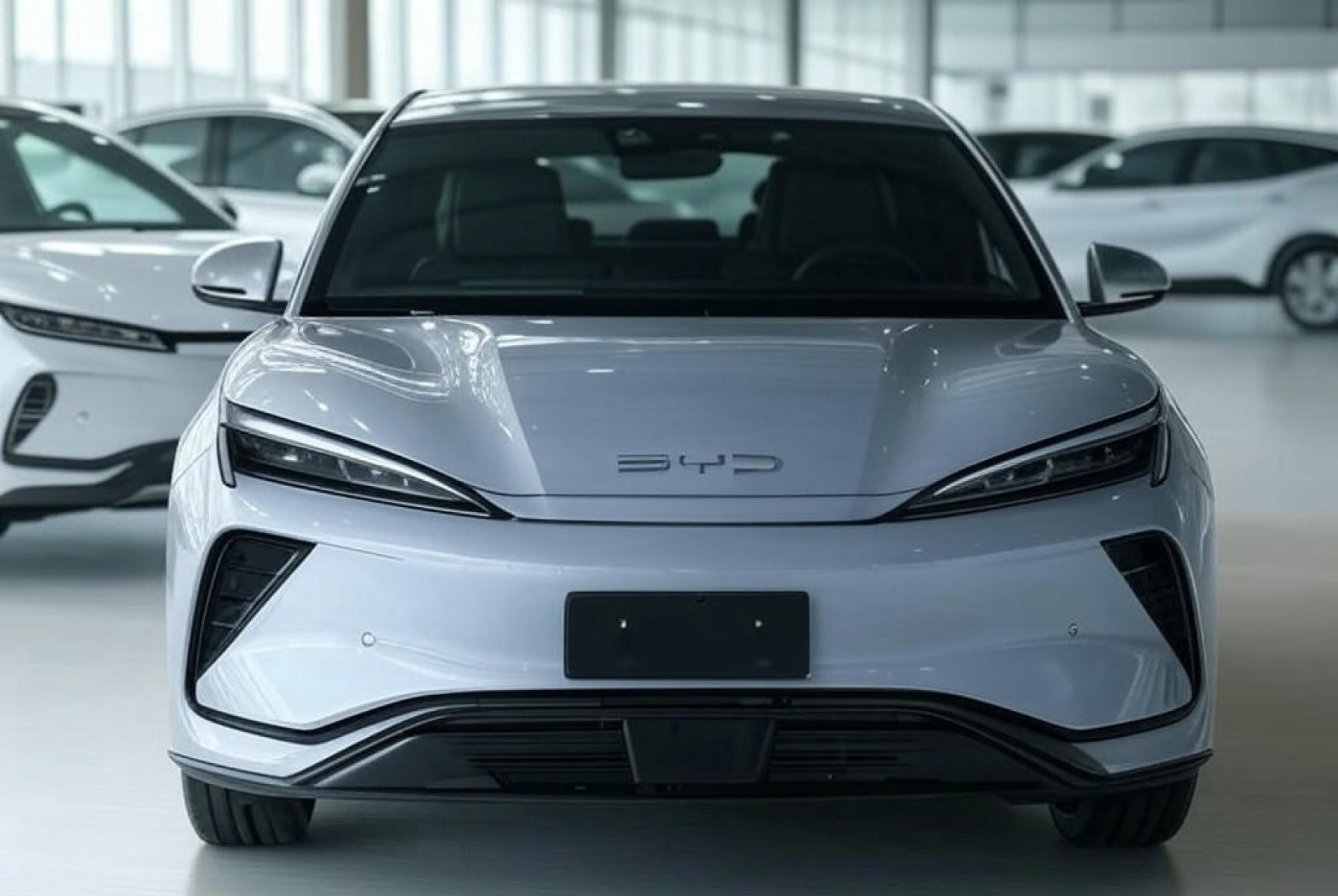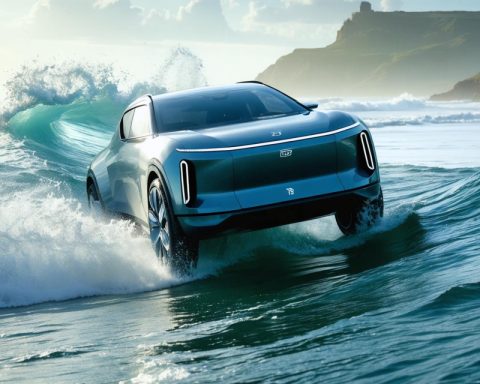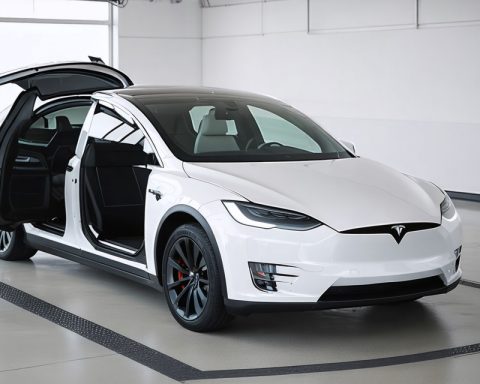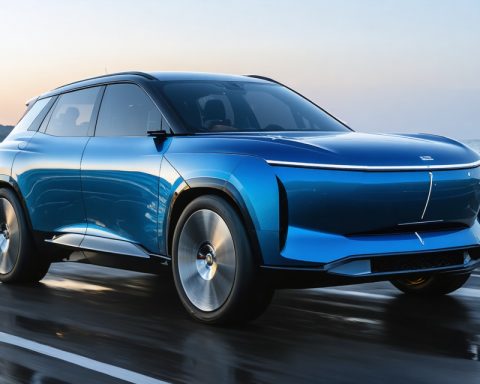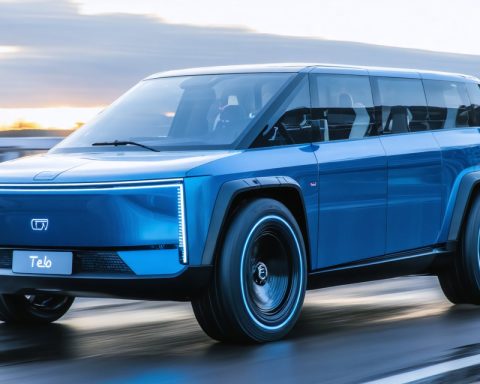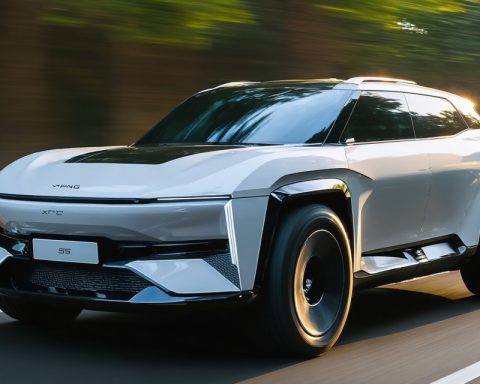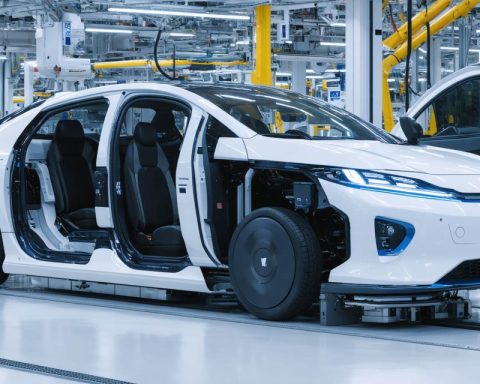- The EV industry is experiencing a major shift as BYD surpasses Tesla in revenue, reaching 777 billion yuan ($107 billion) in 2024.
- BYD’s diverse hybrid vehicle lineup and affordable pricing, exemplified by the Qin L model, are key to its competitive edge over Tesla.
- The innovative “God’s Eye” driver-assistance technology and rapid battery charging capabilities set BYD apart in technological advancement.
- Elon Musk’s controversial political stances may impact Tesla’s consumer perception, benefiting BYD’s stable and innovative reputation.
- BYD is successfully managing global trade dynamics, showing resilience against tariffs while continuing to expand its market presence.
- Investor confidence in BYD is strong, with shares rising over 50% in 2024, reflecting trust in its strategic growth and innovation.
- BYD’s trajectory underscores the importance of adaptability and forward-thinking in the evolving automotive industry.
A seismic shift is rippling through the electric vehicle (EV) landscape. The surge by Shenzhen-based powerhouse, BYD, is eclipsing Tesla, the longstanding monarch of electric innovation. Revenue for the year 2024 has soared by 29% to reach a staggering 777 billion yuan (approximately $107 billion), dethroning Tesla’s $97.7 billion. This growth, fueled by a diverse portfolio of hybrid vehicles, speaks volumes of a strategy rooted not just in electric cars but also in hybrid efficiency.
In a bold move to expand its dominion, BYD has released an economically-savvy adversary—the Qin L model—challenging Tesla’s reign in China’s market. This vehicle, priced compellingly at 119,800 yuan, delivers a financial jolt to Tesla’s Model 3, whose price tag is almost double. Against a backdrop of economic headwinds—ranging from a housing market upheaval to staggering local government debt—savvy consumers are shifting gears towards affordability.
But it’s not just the price point giving BYD the upper hand. Sweeping advancements in technology have placed BYD at the forefront of automotive innovation. Their groundbreaking battery charging technology promises to recharge an EV in a lightning-fast five minutes, far outpacing Tesla’s current offerings. On top of that, “God’s Eye” advanced driver-assistance technology, now a staple feature across all BYD models, sets new standards in automotive safety and luxury.
Amid these market tremors, Tesla finds itself entangled in geopolitical dissonance. CEO Elon Musk’s overt political affiliations and interventions have stirred a global backlash, possibly contributing to a shifting consumer base. As Musk navigates both domestic and international controversies, including his association with far-right politics and controversial statements regarding global leaders, the stability and focus on innovation exhibited by BYD resonate strongly with consumers.
Additionally, global trade dynamics are reshaping. Chinese carmakers, including BYD, are weathering the storm of tariffs in Western markets, but their resilience and strategic foresight have enabled them to diversify and flourish despite economic friction.
The financial markets have responded with enthusiasm. Shares of BYD, buoyed by its substantial innovations and robust market strategies, have climbed by over 50% in 2024, underscoring investor confidence in a rapidly transforming automotive future.
The ascent of BYD is a testament to the power of adaptability and forward-thinking in a volatile market. As the company continues to electrify the globe, its commitment to affordability and innovation positions it not merely as a competitor, but as a formidable leader steering the future of green transportation. The key takeaway is clear: in a world of swift technological change and economic insecurity, those who innovate with precision and insight will command the road ahead.
Electrifying the Future: How BYD is Revolutionizing the EV Market and Outpacing Tesla
Expanding the Horizons of Electric Vehicles
BYD’s rapid rise in the electric vehicle (EV) market presents a fascinating study in strategic innovation and market adaptation. While the original article highlights BYD’s impressive financial growth, there are several aspects worth further exploration to understand the full picture of this shift in the EV landscape.
BYD’s Technological Innovations
1. Battery Technology: BYD’s new battery, which promises a full charge in just five minutes, represents a significant leap in EV charging technology. This advancement could redefine consumer expectations regarding the practicality and convenience of EVs, reducing range anxiety, and making longer trips more feasible without lengthy charging stops.
2. “God’s Eye” Driver-Assistance: This technology offers a comprehensive suite of safety features that use a combination of cameras, sensors, and AI to assist drivers with lane-keeping, collision avoidance, and pedestrian detection. This not only enhances safety but also greatly improves the driving experience by reducing driver fatigue.
Market Strategies and Consumer Trends
– Affordability: The strategic pricing of the Qin L model to significantly undercut Tesla’s Model 3 suggests a deliberate attempt to capture a price-sensitive segment of the market, particularly in countries where economic conditions may not favor luxury purchases.
– Hybrid Vehicles: BYD’s diversification into hybrid models allows consumers who are not ready to fully commit to electric vehicles to still participate in the green movement while enjoying the extended range and flexibility hybrids offer.
Challenges and Geopolitical Dynamics
– Geopolitical Tensions: While Tesla faces challenges due to Elon Musk’s political affiliations, BYD benefits from a more neutral stance, allowing the company to focus on market penetration without the distraction of geopolitical controversies.
– Trade Barriers: Despite considerable tariffs in Western markets, Chinese automakers like BYD are building resilience through diversification. Overseas partnerships and local production in various regions can help mitigate these challenges.
Insights into the Future
Industry Trends and Predictions
– Growth of the EV Market: According to analysts, the global EV market is expected to grow at a compound annual growth rate (CAGR) of around 21.7% from 2022 to 2030 (Allied Market Research), with China leading the charge thanks to strategic players like BYD.
– Sustainability Initiatives: BYD’s commitment to sustainability is reflected in its vertical integration, controlling everything from battery manufacturing to vehicle assembly, thereby reducing its carbon footprint and ensuring high-quality standards.
Actionable Recommendations
– Invest in Innovation: Automakers should prioritize R&D to stay competitive in the evolving EV landscape. Developing cutting-edge technologies like fast-charging batteries and advanced driver-assistance systems can help maintain market relevance.
– Focus on Consumer Needs: Understanding and addressing consumer pain points, such as high vehicle costs and long charging times, can facilitate greater adoption of EVs.
– Navigate Political Landscapes Wisely: Companies should manage political affiliations carefully and focus on universal consumer values like sustainability and affordability.
For more information or to explore BYD’s offerings, visit the official BYD website.
By stepping into the future of electric transportation with a focus on affordability, technology, and global adaptation, BYD is more than just a competitor in the market—it’s a leader shaping the road ahead.
